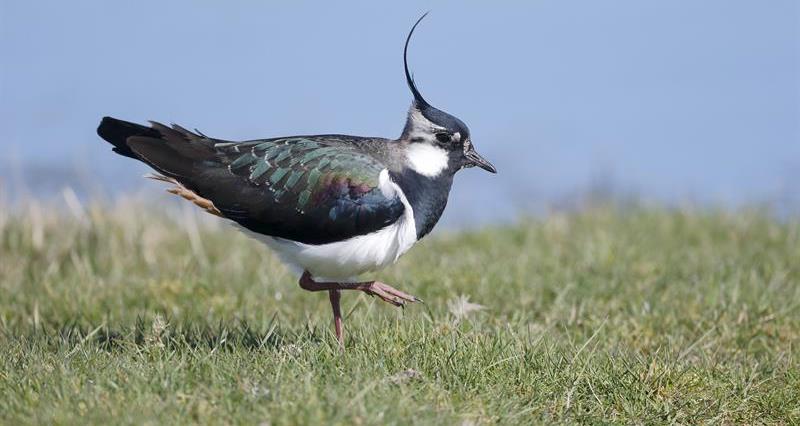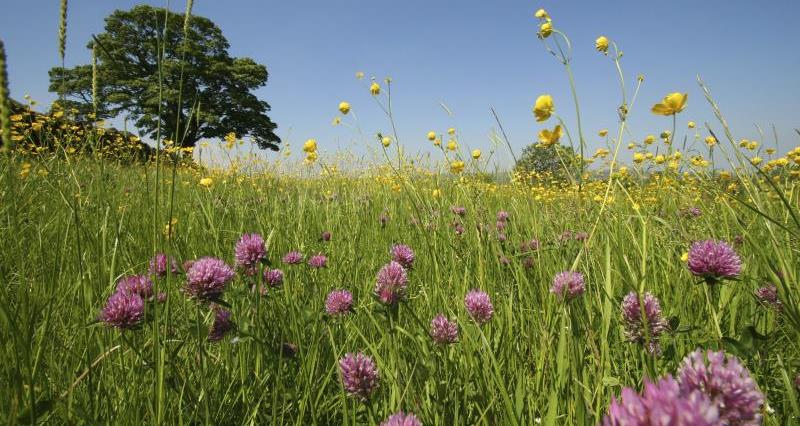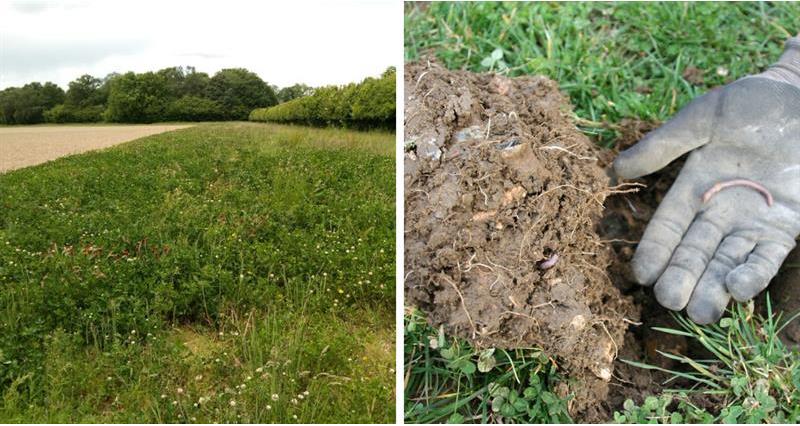The business is split across 300ha of owned land and further 100ha of rented land, as well as contract farming a further 1200ha across 6 agreements. Nicks family have been on the farm since 1936 when his grandfather came as a tenant and he employs four members of staff full time.
The business has two HLS agreements, one due to run out next year and the other in 2022, and just went into a Countryside Stewardship (CS) agreement, as well as putting in environmental measures on areas that are not in schemes, such as one of the contract farms. Nick is also part of the Jordans Farm Partnership for Jordans Cereals, which adds a premium to their crop in exchange for 10% of the farm being used for habitat creation. This premium makes the crops produced in a low yield, stony soil viable.
Nick explains:
Environmental matters
“The environment forms an integral part of our business, and we treat our involvement in schemes such as HLS as another crop. We were therefore keen to enter into a higher tier Countryside Stewardship agreement. Although we wanted to join in 2017 we were delayed due to difficulties in applying, so for 2018 we paid a Wildlife Trust adviser to do the application for us. This was, however, delayed, as we were due to start on the 1st of January 2018, but didn’t receive our agreement until the end of June 2018, which meant we were unable to put in measures under CS. Despite these difficulties, I am keen to participate in environmental initiatives, and since the agreement has been forthcoming, it is now working well.
The importance of soil health
“Healthy soil is very important to us. We are lucky to farm on chalk, which is very forgiving in times of extreme wet or drought as we have experienced this year. To support our soil health we constantly adapt to suit the conditions and manage on a field by field, or even part of field basis. We have moved to min till and no till systems across the farm, with about 55% on min till and the other 45% no till, depending on the conditions. We also use satellite variable application for P & K fertiliser and, where appropriate, variable nitrogen fertiliser applications too, to focus our efforts and reduce input use. Alongside these measures we have also used cover crops for the last six years, as well as overwintering spring crops to protect the soil. I like to see living roots in the soil for as much of the year as possible”
Birds
“I am also particularly enthusiastic about putting in pollen and nectar or winter bird seed mixes on farm, even without agreements. We have been doing this for a long time and trialling different methods, and have now developed our own mixes. Our winter bird seed mix has five different species in it, and areas that we have planted with both of these mixes are hives of activity. I’m proud of our achievements in this, as we now know how to grow mixes which work and are very effective. This is not only good for our on farm biodiversity, but also our engagement with the public who see the amount of wildlife these mixes support.
Food production is still the number priority for us, although awkward corners and less productive areas which are difficult to work, are left fallow which is a low cost method of providing environmental benefit. This approach simply requires a little bit of care and it works well within our wider business. We have also put in grassland mixes, even when this is not part of our required ecological focus area, as the changing rules are awkward and we can still see the benefits on our farm of doing this.
In putting in such measures, we have benefitted from friendly local advice that understands this is a trial and error process whereby we are continually learning. We have worked with our Natural England adviser since 1999 and therefore have built up a good relationship.
Through this adviser we have found ways to manage and preserve the areas of grassland reversion that we put in during 2000, reverting it back from when it was ploughed up in the 1960s, and now it looks fantastic. We have also taken advice from GWCT, as well as from the results of various surveys including bird and moss surveys. As a result, we have taken 139ha out of 1600ha for environmental management and enhanced cropping. We have also hosted delegations from the RPA and Defra, who have benefitted from learning about how their policies link to the practical delivery of such schemes on farm.”

The future
“As a result of taking part in so many different measures, I would like to see a future scheme which has the scope to be more bespoke to what is deliverable on farm and will benefit both that business and the environment, rather than simply what pays. I believe that this will encourage more people to take part properly, as they will want to deliver results of which they can be proud from options they chose themselves and targets they set themselves. It should also be more forgiving to extreme circumstances: for instance, the drought badly hit our bird seed mixes a few years ago, and schemes need to take such conditions into account, whilst still aiming to be ambitious. We cannot have fear of failure preventing farmers taking up the challenge
I am proud of what we have managed to deliver on our farms, both within and outside of schemes, and am keen to develop this in the future, through a scheme which suits my business and the environment.”

